Sales have launched at The Willow, a new 19-story building on the corner of Third Avenue and East 23rd Street in the heart of Gramercy. The first public availabilities start at $1.3 million for one-bedrooms, $2.2 million for two-bedrooms, and $4.2 million for three-bedrooms. The 69 residences include four half-floor penthouses and one full-floor penthouse, but none of these are on the market yet.
The Willow's design by COOKFOX pays homage to historic Gramercy architecture with a hand-laid red brick facade, and details like arched bays and oversized windows create a sense of warmth and sophistication. The launch comes on the heels of developer Naftali Group's most recent successes on the Upper West Side (The Henry), the Upper East Side (255 East 77th Street), and in Brooklyn (One Williamsburg Wharf).
In this article:
Select units have private terraces or loggias, and all interiors by Rockwell Group feature serene color palettes, abundant natural light, wide-plank white oak flooring, and luxurious finishes throughout. Kitchens come equipped with honed quartz countertops and backsplashes, custom millwork cabinetry, and Miele appliance suites. Primary baths feature honed Iced Grey stone-slab countertops, radiant floor heating, and Waterworks fixtures.
Residents of The Willow arrive to an attended jewel-box lobby with a custom stone-patterned floor and an artisan-made reception desk. It sets the tone for a thoughtfully curated amenity package that includes a fitness center with cedar-clad sauna, a nautical-themed children's playroom, a screening room, the Glamercy Room music lounge with a professional recording studio and an extensive vinyl collection, and the speakeasy-inspired Mermaid Room lounge. The rooftop terrace offers grilling stations, dining and lounging areas, and panoramic Manhattan views.
 The Willow library (Naftali Group)
The Willow library (Naftali Group)
Designer David Rockwell drew inspiration for The Willow's amenity spaces from Manhattan's storied past of exclusive private clubs and Prohibition-era speakeasies. This intimate, club-like atmosphere comes through to great effect in a light-filled library with a sleek contemporary fireplace and elegant bookshelves. There are multiple seating areas inside, and the library opens directly onto a beautifully landscaped courtyard garden by Future Green.
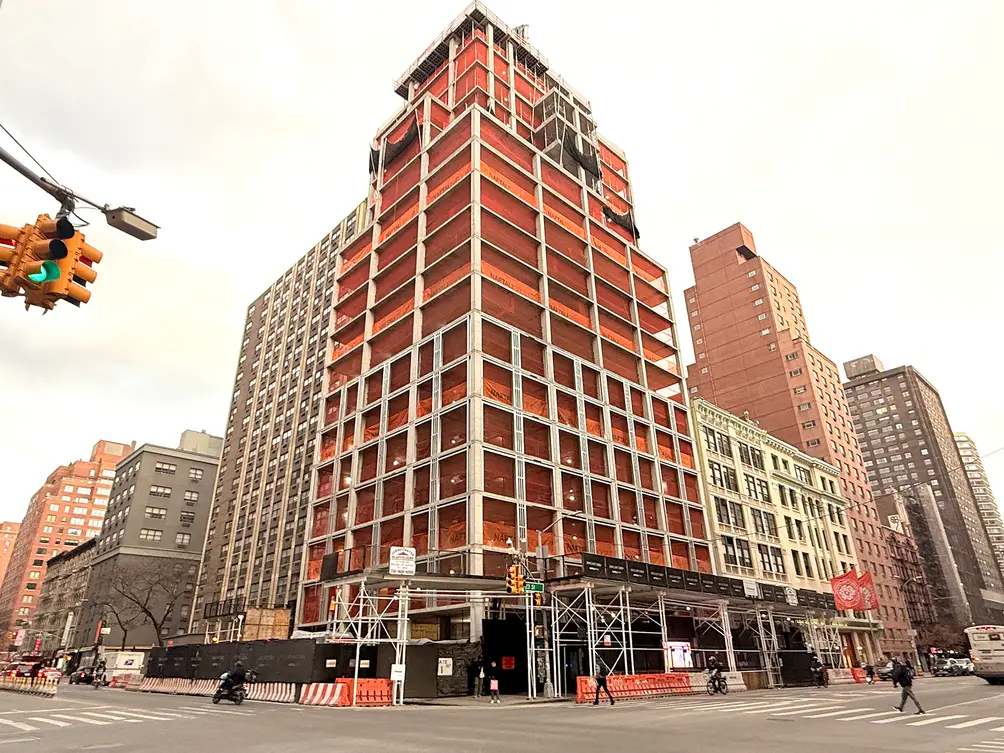 The Willow, March 2025 (CityRealty)
The Willow, March 2025 (CityRealty)
 The Willow under construction pictured towards the bottom left
The Willow under construction pictured towards the bottom left
The Willow's sales launch comes at a time when the death of physical books has been greatly exaggerated. Independent bookstores across New York City are destinations for locals and tourists alike, and some influential social media accounts (hello, BookTok!) are forums for showing off new paperback books and special hardcover editions of old favorites alike. Moreover, in many a luxury real estate listing, glossy coffee table books are pictured as decor for the high-end spaces.
This trend has not escaped New York City residential developers’ attention. High-end developers are allocating precious square footage from common areas and dedicating them to elegant, activated libraries. Beyond that, they are seeking outside experts to curate the libraries, creating literary gems sprinkled throughout the city. We look at buildings with beautifully curated and appointed libraries, and pair them with books about New York City's architecture and urban life.
565 Broome Soho
Developed by Bizzi & Partners, Aronov Development, and Halpern Real Estate Ventures | Design by Renzo Piano Building Workshop
9 availabilities from $1.8 million
565 Broome Soho is the first residential building in New York City designed by Pritzker Prize-winning architect Renzo Piano. 565 Broome Soho features a 90-foot-tall, residents-only glass-encased lounge and conservatory with a wet bar and a library of books curated exclusively by TASCHEN. Additionally, the building offers a first-of-its-kind “book butler,” a complimentary concierge service that allows residents to customize their home library collections with the help of a TASCHEN curator.
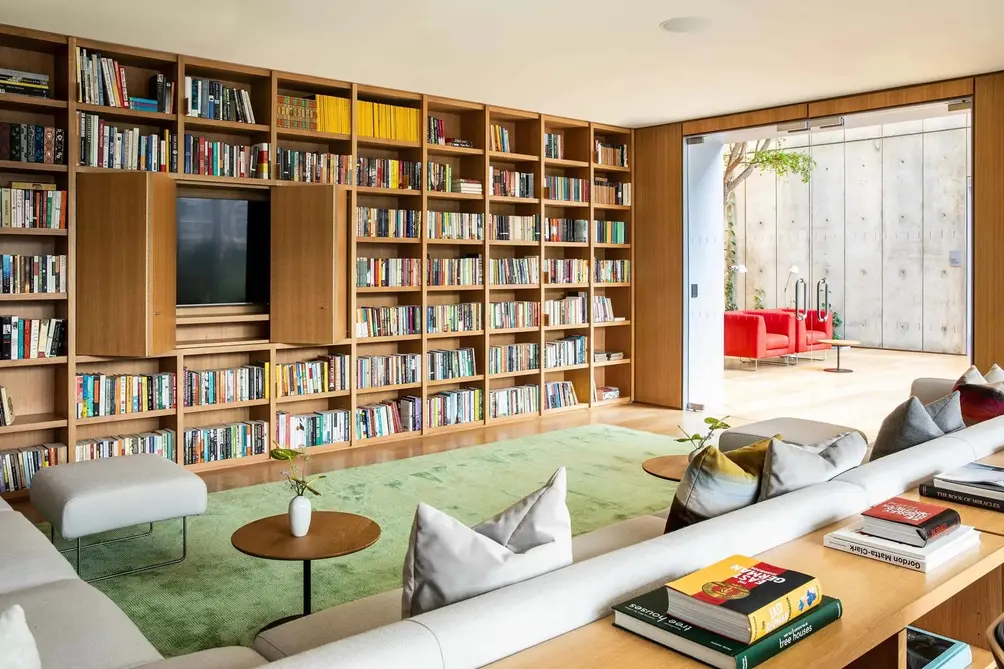 565 Broome Soho library
565 Broome Soho library
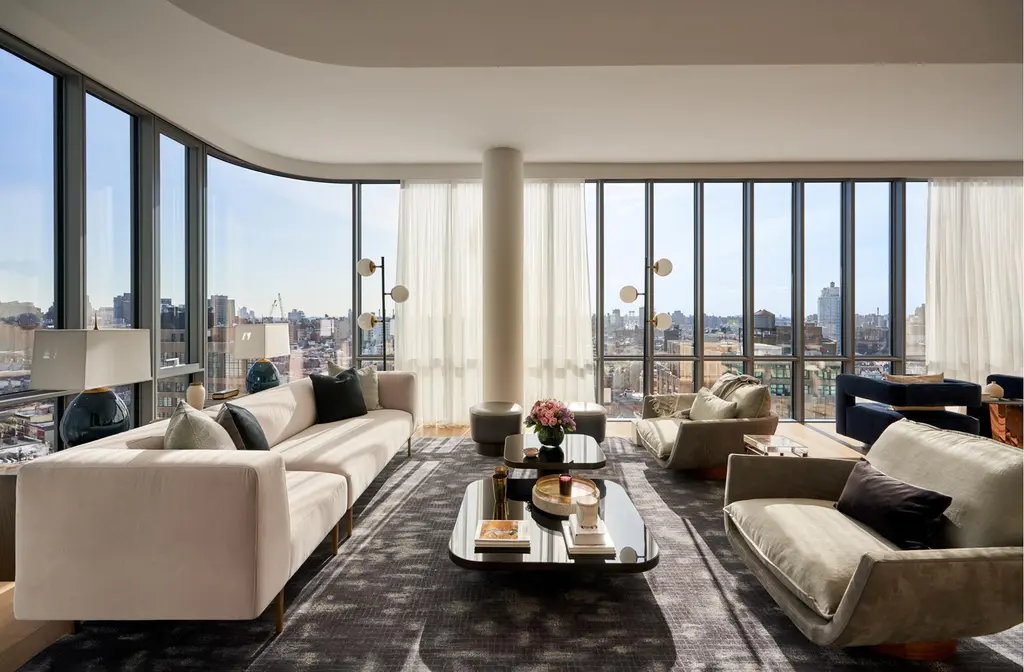
565 Broome SoHo, #S25B (Douglas Elliman Real Estate)
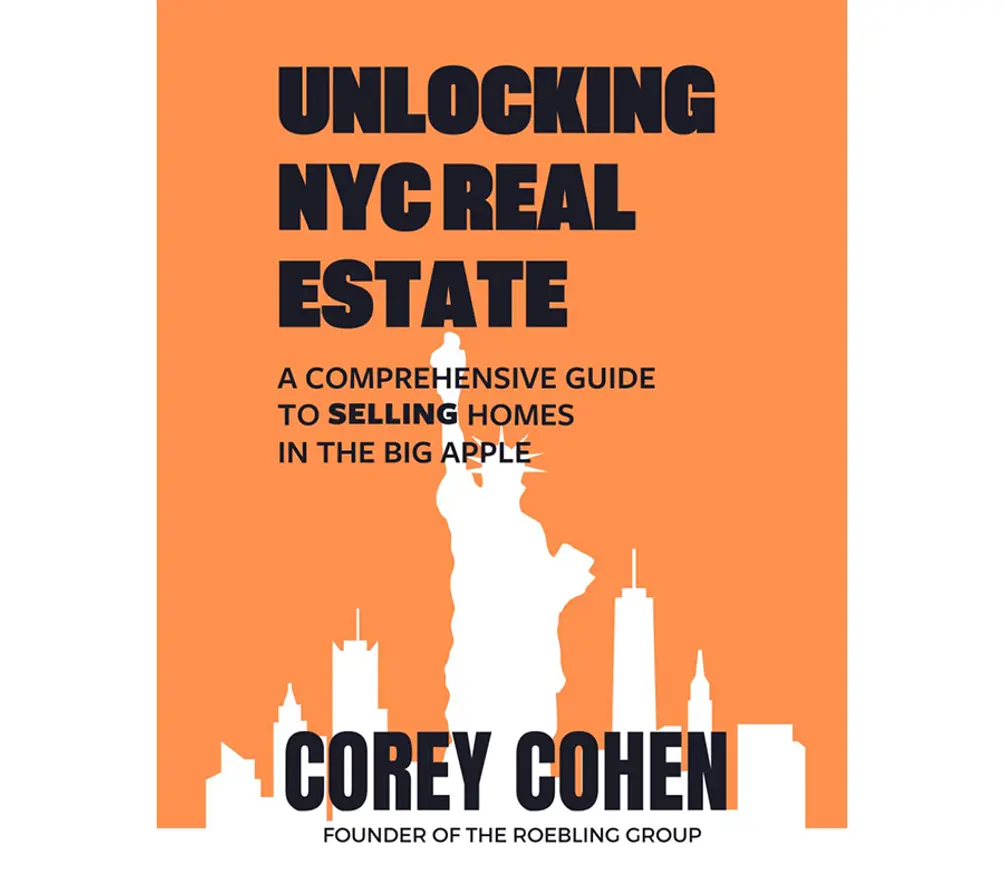
Cover copy: Embark on a journey into the heart of New York City's real estate landscape with "Unlocking NYC Real Estate." This comprehensive guide is your key to navigating the complexities of selling your home in the dynamic market that is The Big Apple.
Penned by Corey Cohen, Founder of The Roebling Group, this book serves as an indispensable resource for homesellers. Delve into the intricate world of New York City residential real estate as you uncover strategic approaches and proven techniques to maximize your apartment sale in one of the world's most competitive markets. Get a copy here.
Penned by Corey Cohen, Founder of The Roebling Group, this book serves as an indispensable resource for homesellers. Delve into the intricate world of New York City residential real estate as you uncover strategic approaches and proven techniques to maximize your apartment sale in one of the world's most competitive markets. Get a copy here.
Madison Square Park Tower, Flatiron
Developed by The Continuum Company | Design by Kohn Pedersen Fox
3 availabilities from $2.6 million
3 availabilities from $2.6 million
Madison Square Park Tower's stunning library boasts interiors by Martin Brudnizki Design Studio. The double-height, wood-paneled sanctuary overlooks a bijou garden by Oehme Van Sweden and serves as an extension of the lobby, the multi-level library features seating areas that surround a bronze-and-wood detailed spiral staircase, which leads to the book-lined mezzanine, where the selections were carefully curated by Ian Bruce Eichner, the Founder and Chairman of the Continuum Company.
Mr. Eichner commented, “I'm an avid reader with interests in art, architecture, travel, history, and wine, which is also true of many of our residents. When it came time to select the books for the building's library, we decided to work with the famed publisher and retailer, TASCHEN, to help us expand upon these subjects to build a well-rounded and thoughtful collection. The library has become one of the building's most popular amenities, which we feel is a testament to this carefully curated selection of books."
Mr. Eichner commented, “I'm an avid reader with interests in art, architecture, travel, history, and wine, which is also true of many of our residents. When it came time to select the books for the building's library, we decided to work with the famed publisher and retailer, TASCHEN, to help us expand upon these subjects to build a well-rounded and thoughtful collection. The library has become one of the building's most popular amenities, which we feel is a testament to this carefully curated selection of books."
 Library (Nest Seekers LLC)
Library (Nest Seekers LLC)
Madison Square Park Tower, #42B
$6,499,000
Flatiron/Union Square | Condominium | 2 Bedrooms, 2 Baths | 2,150 ft2
Madison Square Park Tower, #42B (Compass)
Life at the Top: New York's Most Exceptional Apartment Buildings
By Kirk Henckels and Anne Walker, with photography by Michel Arnaud
By Kirk Henckels and Anne Walker, with photography by Michel Arnaud

Cover copy: What are New York City’s best apartment buildings? Before 1900, it was the Dakota and the Osborne; soon after came McKim, Mead & White’s 998 Fifth and the ultra-soigné 820 Fifth Avenue. The roaring twenties produced true luxury: 740 Park Avenue, the art deco–inspired River House, and Rosario Candela’s extraordinary 778 and 720 Park Avenue. Today, the city’s skyline sparkles with palatial new buildings, such as Robert A. M. Stern’s 15 Central Park West, Richard Meier’s glass-walled Perry Street towers, and 432 Park Avenue, New York’s tallest residential building.
Kirk Henckels and Anne Walker, real estate and architectural insiders, chronicle the fortunes and features of 15 outstanding apartment houses with a wealth of vintage and new photography and architectural plans, and show off select apartments as they look today, designed by top interior designers. Get a copy here.
Kirk Henckels and Anne Walker, real estate and architectural insiders, chronicle the fortunes and features of 15 outstanding apartment houses with a wealth of vintage and new photography and architectural plans, and show off select apartments as they look today, designed by top interior designers. Get a copy here.
Rose Hill, NoMad/Gramercy
Developed by Rockefeller Group | Design by CetraRuddy
7 availabilities from $1.6 million
When NoMad condo Rose Hill was still on the drawing board, designer Nancy Ruddy, founding principal of CetraRuddy Architecture, looked up the definition of “library” in both Merriam-Webster and architectural dictionaries and found that, "yes, libraries are repositories of important documents but they are curated collections of books, art, and artifacts. So we started to think of our library not as just a book-lined room, but as a space where knowledge is imparted and where there can be wonder about the world.” She also drew inspiration from Rose Hill developer Rockefeller Group’s patronage of libraries, museums, and the arts.
To that end, Rose Hill’s library features decor inspired by stately university clubs, yet offers an atmosphere that invites residents to stop, chat, congregate, and enjoy materials that might not be on their own bookshelves. The library's books were curated by local institution Strand Bookstore with great literature of New York writers, some of which are out of print. In addition to works by famous writers of New York’s past, like Edith Wharton and Dorothy Parker, there are old articles about the city as well as political cartoons from Tammany Hall.
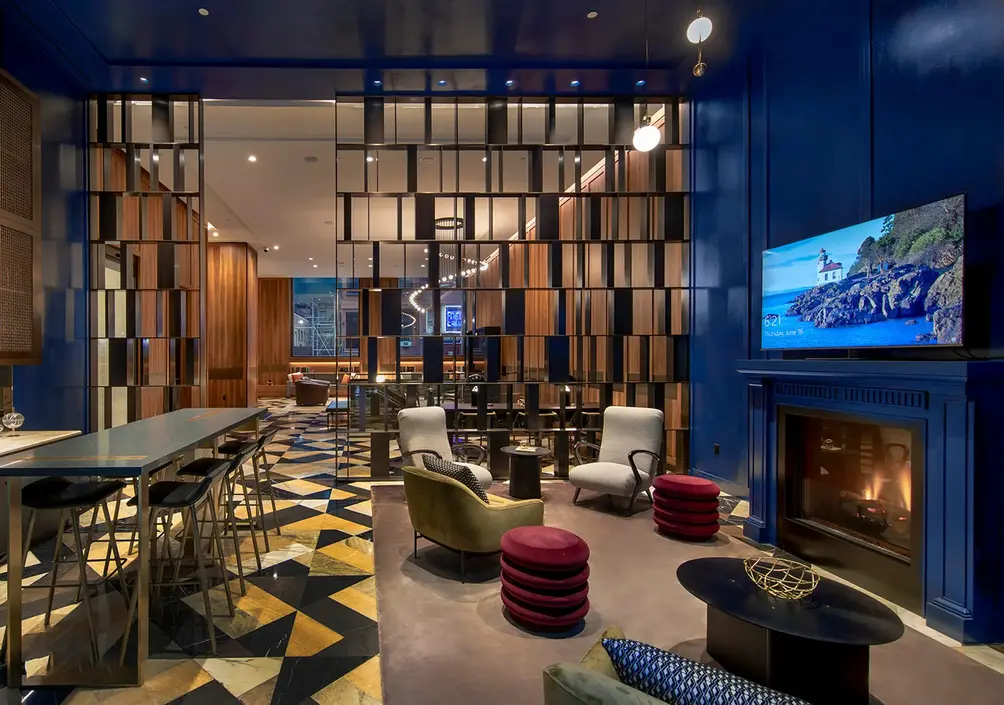 Library lounge (CORE Group Marketing LLC)
Library lounge (CORE Group Marketing LLC)
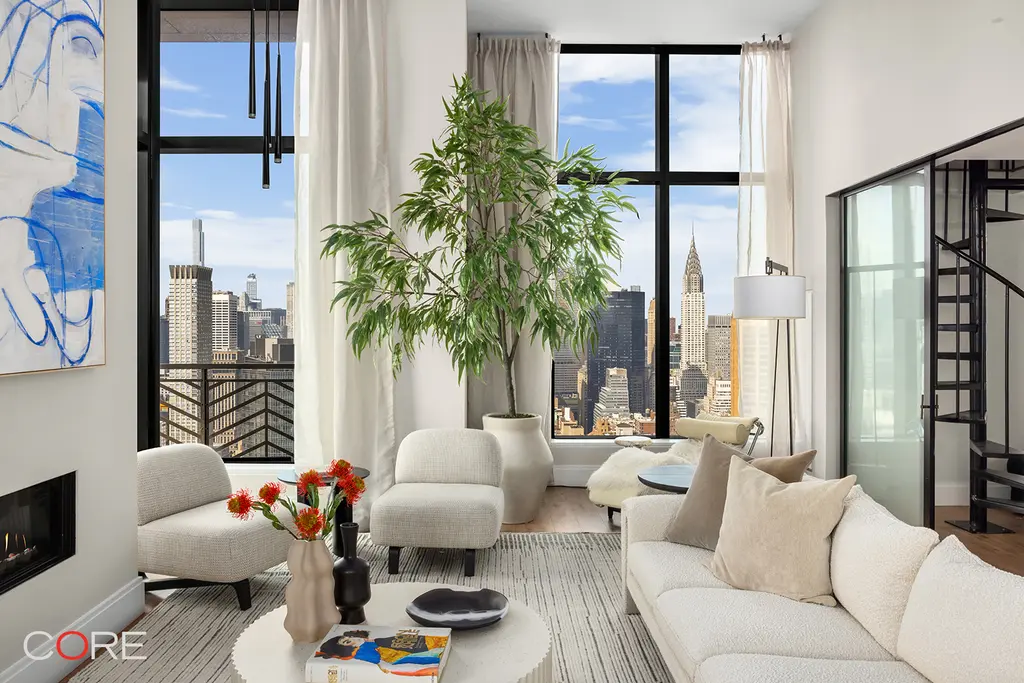
Rose Hill, #PHB (CORE Group Marketing LLC)
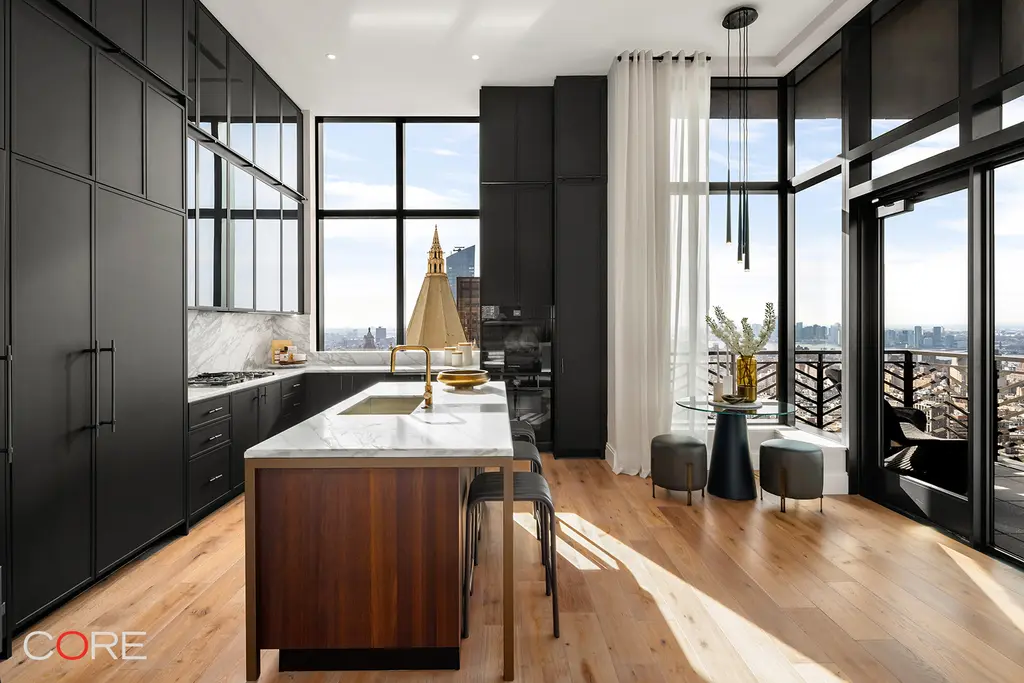
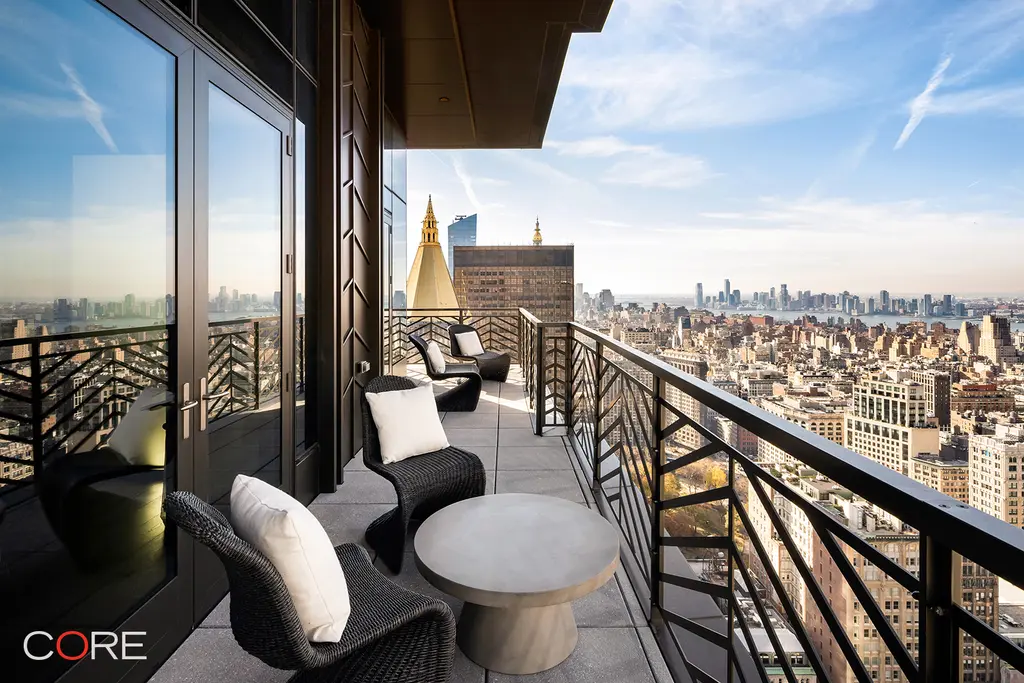
Movement: New York's Long War to Take Back Its Streets from the Car
By Nicole Gelinas
By Nicole Gelinas
Would you like to tour any of these properties?
Just complete the info below.
Or call us at (212) 755-5544
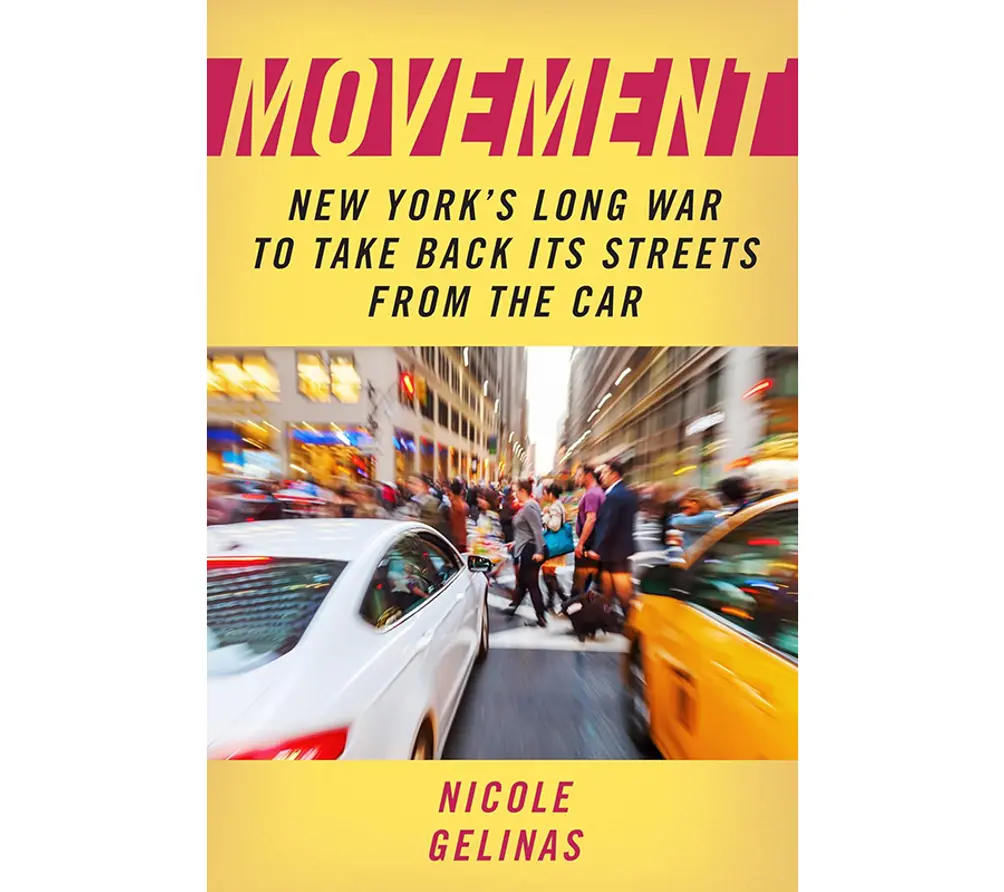
Cover copy: In 1969, as all students of New York City history think they have learned, master builder Robert Moses lost his long battle to urbanist Jane Jacobs over his planned Lower Manhattan Expressway. The ten-lane elevated expressway would have sliced across SoHo and Little Italy, demolishing historic buildings, and displacing thousands of families and businesses. Jacobs and her neighbors defeated Moses, and as a result, New York became the only major American city with no interstate highway running through its core. Like many global cities, though, New York had spent fifty years during the first half of the twentieth century trying and failing to tame its heavily populated landscape to fit the private automobile. New York has now spent more than fifty years trying to undo those mistakes, wresting back city space for people, not cars.
Movement: New York’s Long War to Take Back Its Streets from the Car chronicles the earlier, less-known battles that preceded the cancellation of the Lower Manhattan Expressway: Jacobs became an example for generations of urban planners, but whose example did Jacobs emulate in an earlier victory that saved Washington Square Park? Moses may serve handily as New York’s uber-villain now, but who, before him, was responsible for destroying a critical part of New York’s transit system? Get a copy here.
Movement: New York’s Long War to Take Back Its Streets from the Car chronicles the earlier, less-known battles that preceded the cancellation of the Lower Manhattan Expressway: Jacobs became an example for generations of urban planners, but whose example did Jacobs emulate in an earlier victory that saved Washington Square Park? Moses may serve handily as New York’s uber-villain now, but who, before him, was responsible for destroying a critical part of New York’s transit system? Get a copy here.
The West Residence Club makes a striking statement on the corner of West 47th Street and Eleventh Avenue. The quality of the apartments and extent of amenities sets new standards for Hell's Kitchen.
Just off the attended lobby, the freestanding library was dubbed Glasshouse for the incredible light filling the space. A fireplace is perfect for chilly days, and it is well positioned near the building's courtyard for outdoor reading when it warms up.
Just off the attended lobby, the freestanding library was dubbed Glasshouse for the incredible light filling the space. A fireplace is perfect for chilly days, and it is well positioned near the building's courtyard for outdoor reading when it warms up.
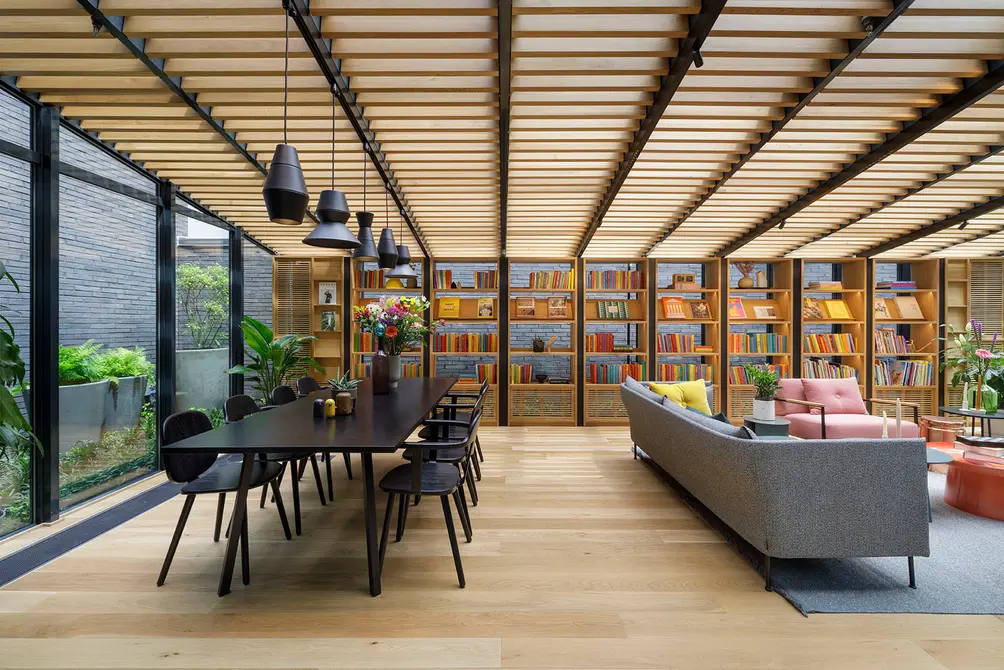 Glass House (Ewout Huibers, courtesy of Concrete)
Glass House (Ewout Huibers, courtesy of Concrete)
The West Residence Club, #1014
$1,995,000
Midtown West | Condominium | 2 Bedrooms, 2 Baths | 1,070 ft2

The West Residence Club, #1014 (Corcoran Sunshine Marketing Group)
She-Wolves: The Untold History of Women on Wall Street
By Paulina Bren
By Paulina Bren

Cover copy: First came the secretaries from Brooklyn and Queens―the “smart cookies” who saw that making money, lots of it, might be within their grasp. Then came the first female Harvard Business School graduates, who were in for a rude awakening because an equal degree did not mean equal opportunity. But by the 1980s, as the market went into turbodrive, women were being plucked from elite campuses to feed the belly of a rapidly expanding beast, playing for high stakes in Wall Street’s bad-boy culture by day and clubbing by night.
In She-Wolves, award-winning historian Paulina Bren tells the story of how women infiltrated Wall Street from the swinging sixties to 9/11―starting at a time when “No Ladies” signs hung across the doors of its luncheon clubs and (more discretely) inside its brokerage houses and investment banks. If the wolves of Wall Street made a show of their ferocity, the she-wolves did so with subtlety and finesse. Get a copy here.
In She-Wolves, award-winning historian Paulina Bren tells the story of how women infiltrated Wall Street from the swinging sixties to 9/11―starting at a time when “No Ladies” signs hung across the doors of its luncheon clubs and (more discretely) inside its brokerage houses and investment banks. If the wolves of Wall Street made a show of their ferocity, the she-wolves did so with subtlety and finesse. Get a copy here.
20 East End Avenue is a luxury condominium designed inside and out by the renowned Robert A.M. Stern Architects. The dreamy library has an extensive book collection on the history of New York that was curated by Mr. Stern himself. Nestled on the second floor overlooking East End Avenue, the library features a fireplace with a Pietra Serena hearth surrounded by Paonazzo marble, as well as French walnut doors. The paneled walls and ceiling feature a grey lacquer finish, while ample seating allows residents to relax and get lost in a novel.
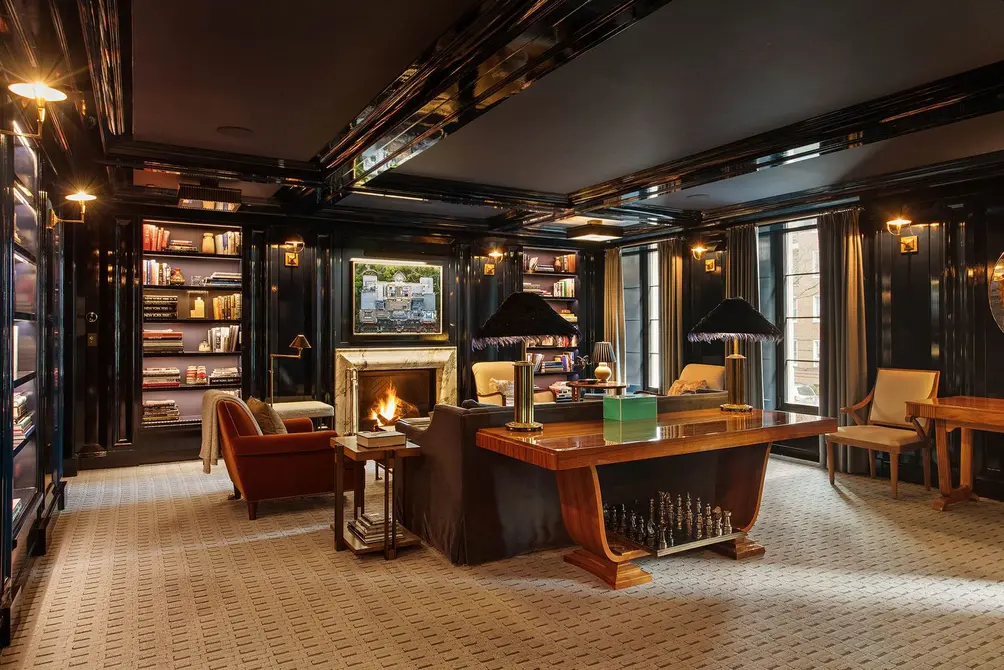 20 East End Avenue library (Compass)
20 East End Avenue library (Compass)

20 East End Avenue, #4C (Compass)
Rosario Candela & The New York Apartment: 1927-1937
By David Netto, Paul Goldberger, and Peter Pennoyer, with foreword by Aerin Lauder
By David Netto, Paul Goldberger, and Peter Pennoyer, with foreword by Aerin Lauder
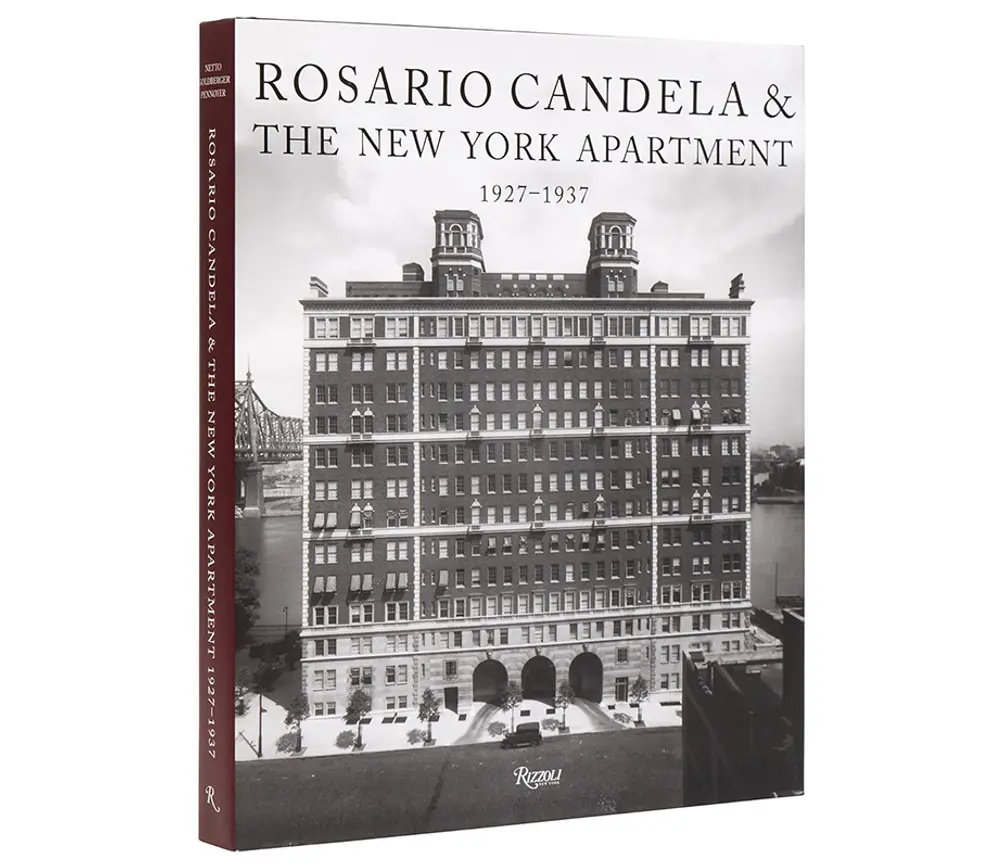
Cover copy: Known and celebrated for many of the apartment buildings on Park Avenue, Fifth Avenue, and in Sutton Place—82 in NYC, including the storied 740 Park, sometimes called the richest and most powerful address in New York and whose famous residents included John D. Rockefeller Jr.—Candela’s work is at once timeless and profoundly of its time. Classical in styling and even modest on the exterior, it is on the insides, in the apartment interiors, the floorplans, the extraordinary and frequently luxurious arrangements of rooms and space, where his designs set a standard that serves as a benchmark and aspirational goal of taste and refinement. The authors explore these seminal spaces through the lens of exteriors and urbanism, planning and interior architecture, and the circumstances and stories of creation.
Lavish and comprehensive black-and-white vintage photography as well as color imagery of the exteriors, original plans, and a collection of exceptional interior views give historical perspective (including a seductive Slim Aarons' Park Avenue streetscape) and contemporary sizzle (as seen in Derry Moore’s depiction of K. K. Auchincloss’s penthouse at 1040 Fifth). The story told is of a genius designer who gave form to the New York of his dreams. Get a copy here.
Lavish and comprehensive black-and-white vintage photography as well as color imagery of the exteriors, original plans, and a collection of exceptional interior views give historical perspective (including a seductive Slim Aarons' Park Avenue streetscape) and contemporary sizzle (as seen in Derry Moore’s depiction of K. K. Auchincloss’s penthouse at 1040 Fifth). The story told is of a genius designer who gave form to the New York of his dreams. Get a copy here.
40 East End Avenue is a stunning Upper East Side boutique condominium. Designer Deborah Berke is a Yorkville local who brought her neighborhood expertise to the area, and partnered with BookHampton to curate the library.
In 2016, Ms. Berke led the redesign of the iconic bookshop, which was honored with the East End Design award. 40 East End Avenue has beautiful light, water views and access to some of the city’s most beautiful parks. Inspired by this, BookHampton selected titles that focus on art, design, architecture, gardens, nature, entertaining and children’s classics for the space.
In 2016, Ms. Berke led the redesign of the iconic bookshop, which was honored with the East End Design award. 40 East End Avenue has beautiful light, water views and access to some of the city’s most beautiful parks. Inspired by this, BookHampton selected titles that focus on art, design, architecture, gardens, nature, entertaining and children’s classics for the space.
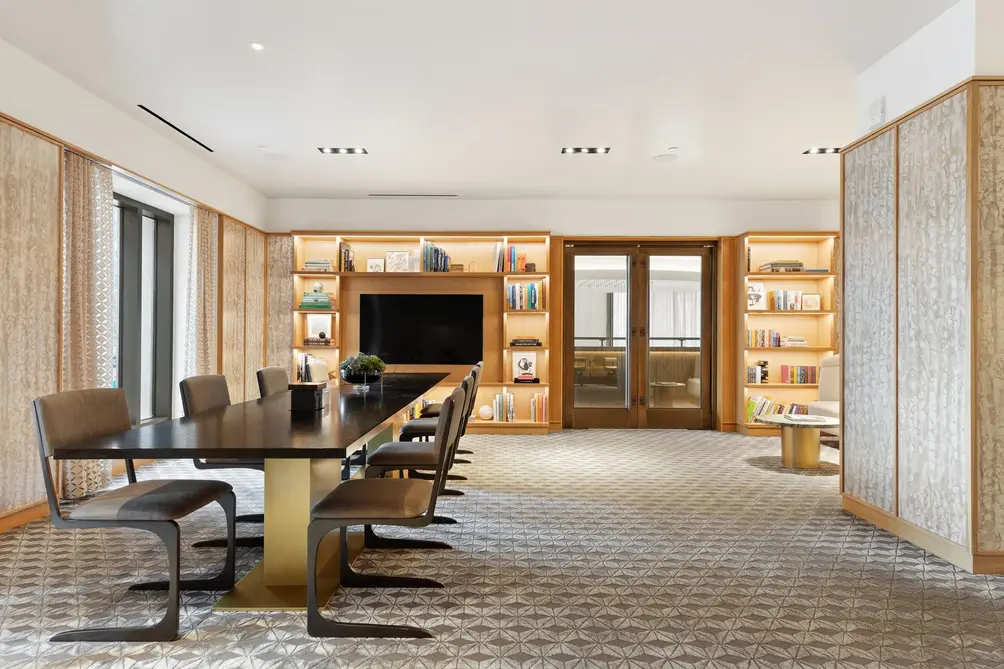 Library at 40 East End Avenue
Library at 40 East End Avenue
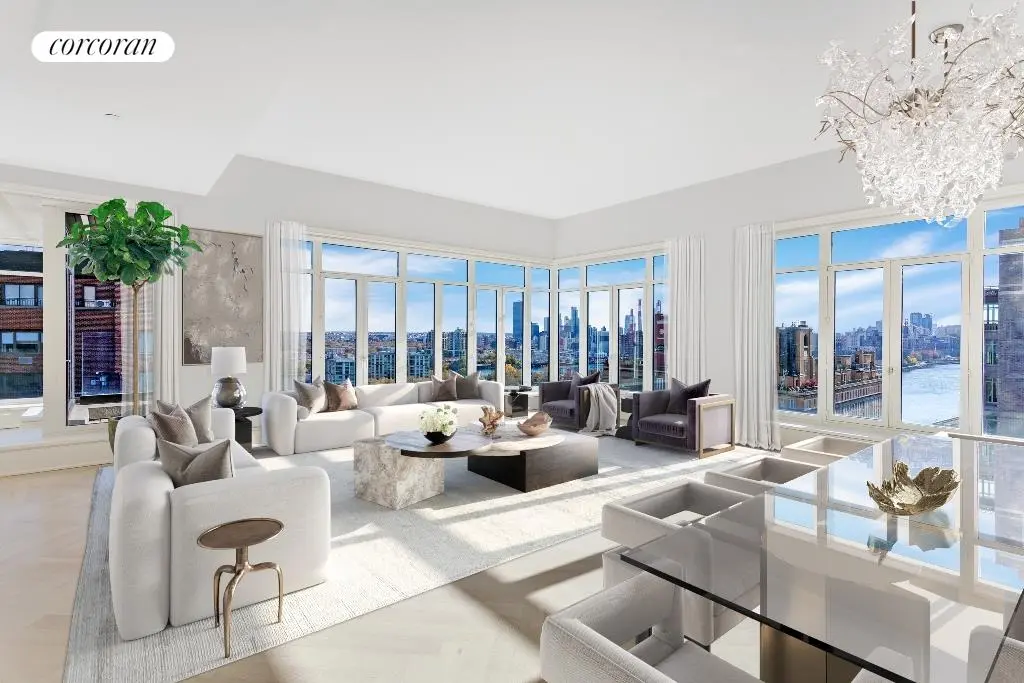
40 East End Avenue, #PH17 (Corcoran Sunshine Marketing Group)
The Architecture of Urbanity: Designing for Nature, Culture, and Joy
By Vishaan Chakrabarti
By Vishaan Chakrabarti

Cover copy: The world is facing unprecedented challenges, from climate change and population growth, to political division and technological dislocation, to declining mental health and fraying cultural fabric. With most of the planet’s population now living in urban environments, cities are the spaces where we have the greatest potential to confront and address these problems. In this visionary book, Vishaan Chakrabarti argues for an “architecture of urbanity,” showing how the design of our communities can create a more equitable, sustainable, and joyous future for us all.
Taking readers from the great cities of antiquity to the worldwide exurban sprawl of our postindustrial age, Chakrabarti examines architecture’s relationship to history’s greatest social, technological, and environmental dilemmas. He then presents a rich selection of work by a global array of practicing architects, demonstrating how innovative design can dramatically improve life in big cities and small settlements around the world, from campuses and refugee camps to mega-cities like São Paulo, Lima, Los Angeles, New York, Paris, and Tokyo. Get a copy here.
Taking readers from the great cities of antiquity to the worldwide exurban sprawl of our postindustrial age, Chakrabarti examines architecture’s relationship to history’s greatest social, technological, and environmental dilemmas. He then presents a rich selection of work by a global array of practicing architects, demonstrating how innovative design can dramatically improve life in big cities and small settlements around the world, from campuses and refugee camps to mega-cities like São Paulo, Lima, Los Angeles, New York, Paris, and Tokyo. Get a copy here.
 One Williamsburg Wharf (Naftali Group)
One Williamsburg Wharf (Naftali Group)
One Williamsburg Wharf represents prolific developer Naftali Group's first Brooklyn condo offering. The design of the building reflects the sunlight in unique ways, fills every unit with abundant light, and allows for breathtaking views.
In addition to the offerings of the Williamsburg Wharf Resort & Recreation Club, One Williamsburg Wharf offers an exclusive amenity package designed by Ward + Gray and inspired by private members' clubs. At the heart of it is a light-filled library that makes the most of river and skyline views. The nearby Café Kent, exclusive to One Williamsburg Wharf residents, is perfect for gathering with friends or grabbing a coffee to go.
In addition to the offerings of the Williamsburg Wharf Resort & Recreation Club, One Williamsburg Wharf offers an exclusive amenity package designed by Ward + Gray and inspired by private members' clubs. At the heart of it is a light-filled library that makes the most of river and skyline views. The nearby Café Kent, exclusive to One Williamsburg Wharf residents, is perfect for gathering with friends or grabbing a coffee to go.
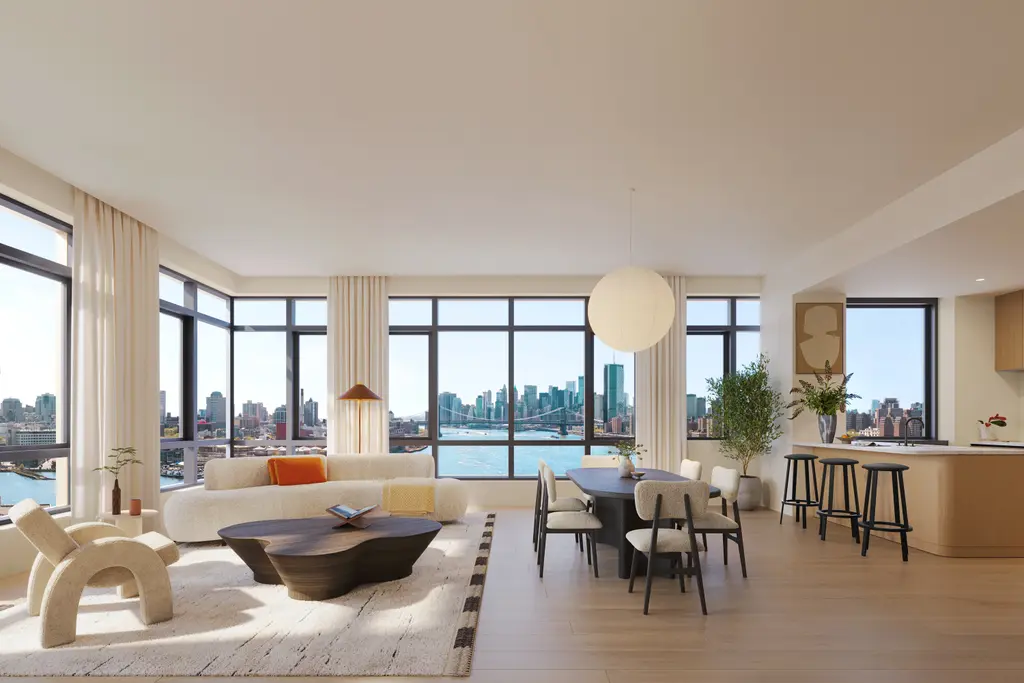
One Williamsburg Wharf, #10A (Serhant)
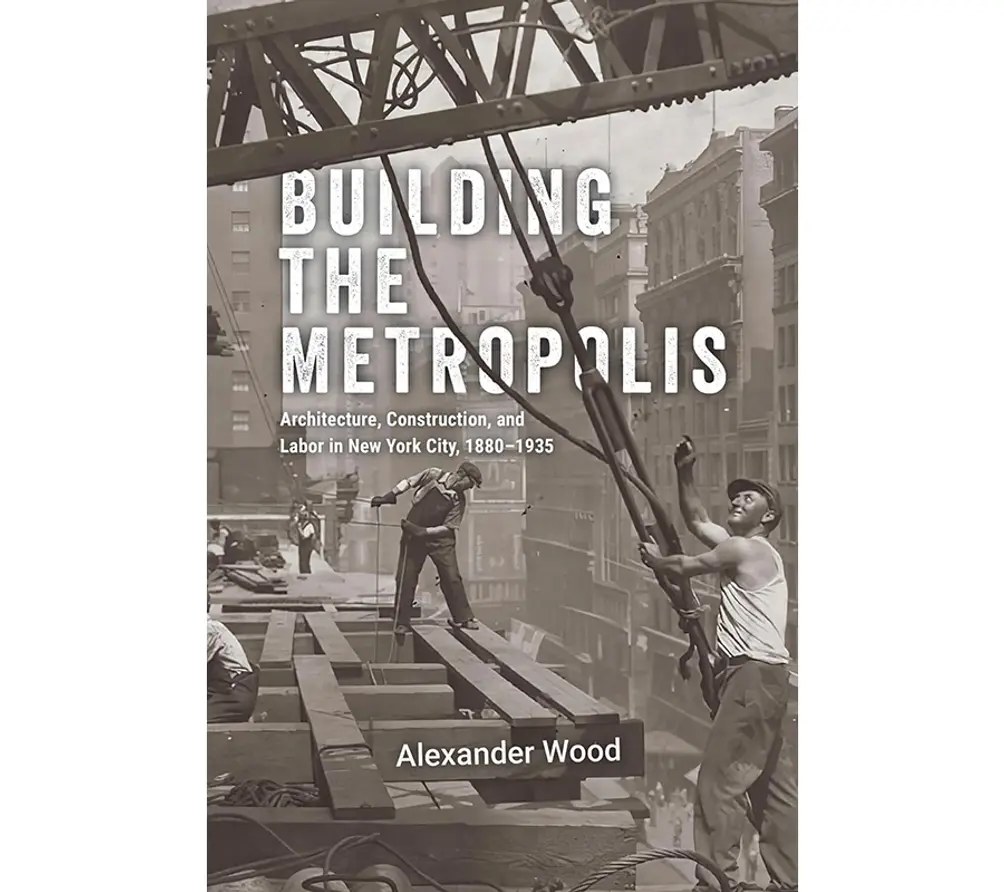
Cover copy: Between the 1880s and the 1930s, New York City experienced explosive growth as nearly a million buildings, dozens of bridges and tunnels, hundreds of miles of subway lines, and thousands of miles of streets were erected to meet the needs of an ever-swelling population. This landscape—jagged with skyscrapers, rattling with the sound of mass transit, alive with people—made the city world-famous.
Building the Metropolis offers a revelatory look at this era of urban development by asking, “Who built New York, and how?” Focusing on the work of architects, builders, and construction workers, Alexander Wood chronicles the physical process of the city’s rapid expansion. New York’s towering buildings and busy thoroughfares aren’t just stylish or structural marvels, Wood shows, but the direct result of the many colorful personalities who worked in one of the city’s largest industries. Get a copy here.
Building the Metropolis offers a revelatory look at this era of urban development by asking, “Who built New York, and how?” Focusing on the work of architects, builders, and construction workers, Alexander Wood chronicles the physical process of the city’s rapid expansion. New York’s towering buildings and busy thoroughfares aren’t just stylish or structural marvels, Wood shows, but the direct result of the many colorful personalities who worked in one of the city’s largest industries. Get a copy here.
Would you like to tour any of these properties?
Just complete the info below.
Or call us at (212) 755-5544
Would you like to tour any of these properties?








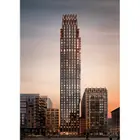
 6sqft delivers the latest on real estate, architecture, and design, straight from New York City.
6sqft delivers the latest on real estate, architecture, and design, straight from New York City.
